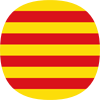
Seminar für Jedermann
Using Fascial Imagery in the Feldenkrais Method, Part 1 (online seminar)
Diese Seite wurde nicht ins Deutsche übersetzt, deshalb wird einiges in Englisch angezeigt. Oben auf dieser Seite kannst Du eine andere Sprache wählen.
Our understanding of whole-body movement is based on our internal self-image and the parts of ourselves that we are aware of. Our brain shapes the gestalt of a movement or an action as one whole piece of information and is not concerned with individual muscles.
In Feldenkrais lessons we use many wonderful tools to help us rediscover connections within ourselves and to find ways of sensing the synergy of movement-planning and movement-action. Using images to enhance student’s awareness of relationships and coherence within themselves is one of those techniques. I have found that thinking about fascial pathways along the length of the body can provide an integrative and accessible tool for sensing the coordination of well-distributed action throughout oneself.
The elasticity of the fascial membranes, and their tendency to overlie and overlap other structures, allows a way of thinking that can help to discover global coordination of movement in a new way.
In these workshops we will look at the way connective tissue creates lines of transmission throughout the body and use these images within classic Feldenkrais lessons, in order to enrich your experience of the lessons.
In Part 1 (this workshop) we will look at connections along the back, the front and the sides of the body, as well as spiraling connections which wrap around us.
The line of pull along the back of ourselves provides stability when standing at full length and literally stops us from falling forwards. The connections along the front of ourselves have much to do with protection and strength, the anxiety reflex and the ability to mobilize ourselves. Lateral interweaving along the length of the right and left sides of the body create balance, not only between the two sides but also between the front and the back. Whilst mediating forces, they also stabilize the trunk and legs in order to enable freedom of movement in the shoulder girdle – which allows us to make practical and effective use of the arms. Finally, the spiral connections wrapping around us maintain balance across all the planes, and facilitate the intrinsically human ability of turning around our central axis in order to sweep our attention around our surroundings and act or react as needed.
Finding true length means balancing all these lines of tension. Our joints will be able to unfold more fully and access larger degrees of freedom if we can reconfigure body wide patterns of compensation and unite the communication between these opposing forces to a single sense of being in-tune with oneself.
Please note: This webinar is part 1 of two 2-day workshops about using fascial imagery in the Feldenkrais Method. In part 2 (1/ 2 May) Kathryn will explore the way our arms connect into our body, the functional relationship between arms and legs, and the deep supportiveness of our inner core. Please find more information here…










